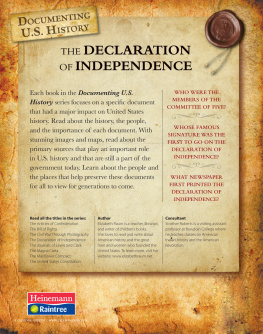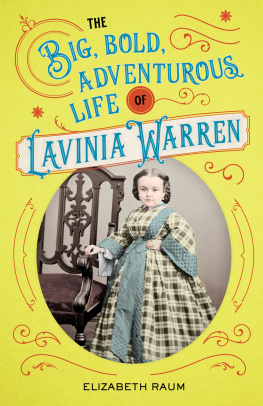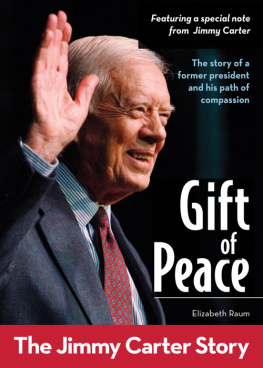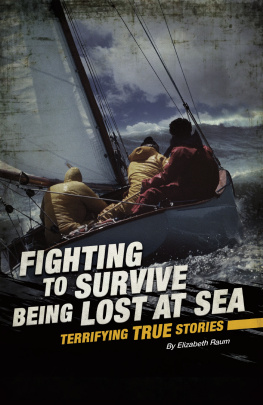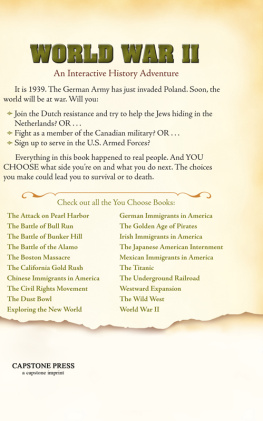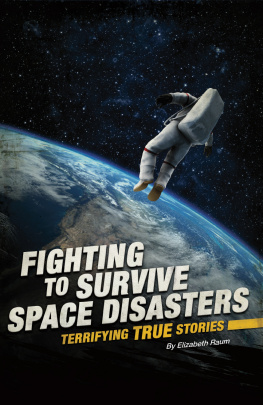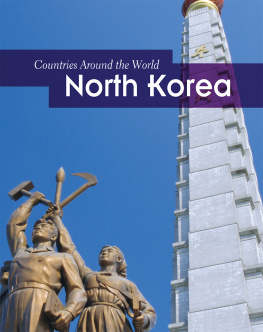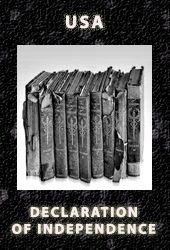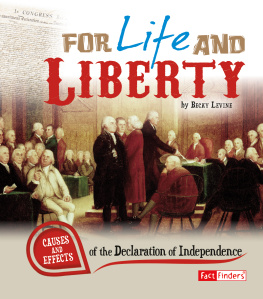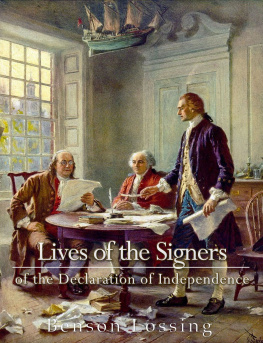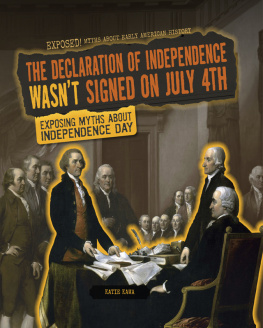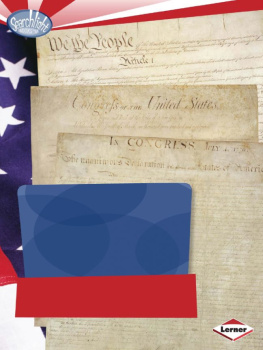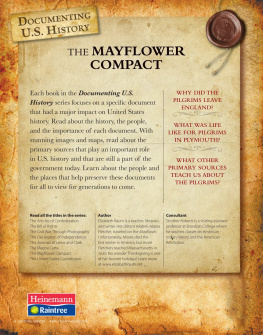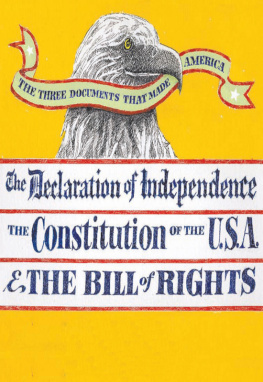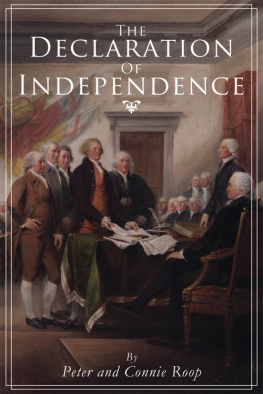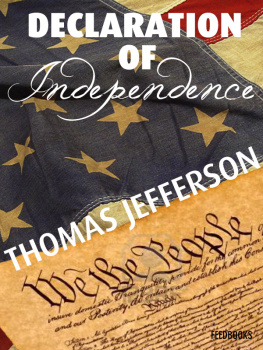Elizabeth Raum - The Declaration of Independence
Here you can read online Elizabeth Raum - The Declaration of Independence full text of the book (entire story) in english for free. Download pdf and epub, get meaning, cover and reviews about this ebook. year: 2012, publisher: Capstone, genre: History. Description of the work, (preface) as well as reviews are available. Best literature library LitArk.com created for fans of good reading and offers a wide selection of genres:
Romance novel
Science fiction
Adventure
Detective
Science
History
Home and family
Prose
Art
Politics
Computer
Non-fiction
Religion
Business
Children
Humor
Choose a favorite category and find really read worthwhile books. Enjoy immersion in the world of imagination, feel the emotions of the characters or learn something new for yourself, make an fascinating discovery.
- Book:The Declaration of Independence
- Author:
- Publisher:Capstone
- Genre:
- Year:2012
- Rating:4 / 5
- Favourites:Add to favourites
- Your mark:
- 80
- 1
- 2
- 3
- 4
- 5
The Declaration of Independence: summary, description and annotation
We offer to read an annotation, description, summary or preface (depends on what the author of the book "The Declaration of Independence" wrote himself). If you haven't found the necessary information about the book — write in the comments, we will try to find it.
The Declaration of Independence — read online for free the complete book (whole text) full work
Below is the text of the book, divided by pages. System saving the place of the last page read, allows you to conveniently read the book "The Declaration of Independence" online for free, without having to search again every time where you left off. Put a bookmark, and you can go to the page where you finished reading at any time.
Font size:
Interval:
Bookmark:

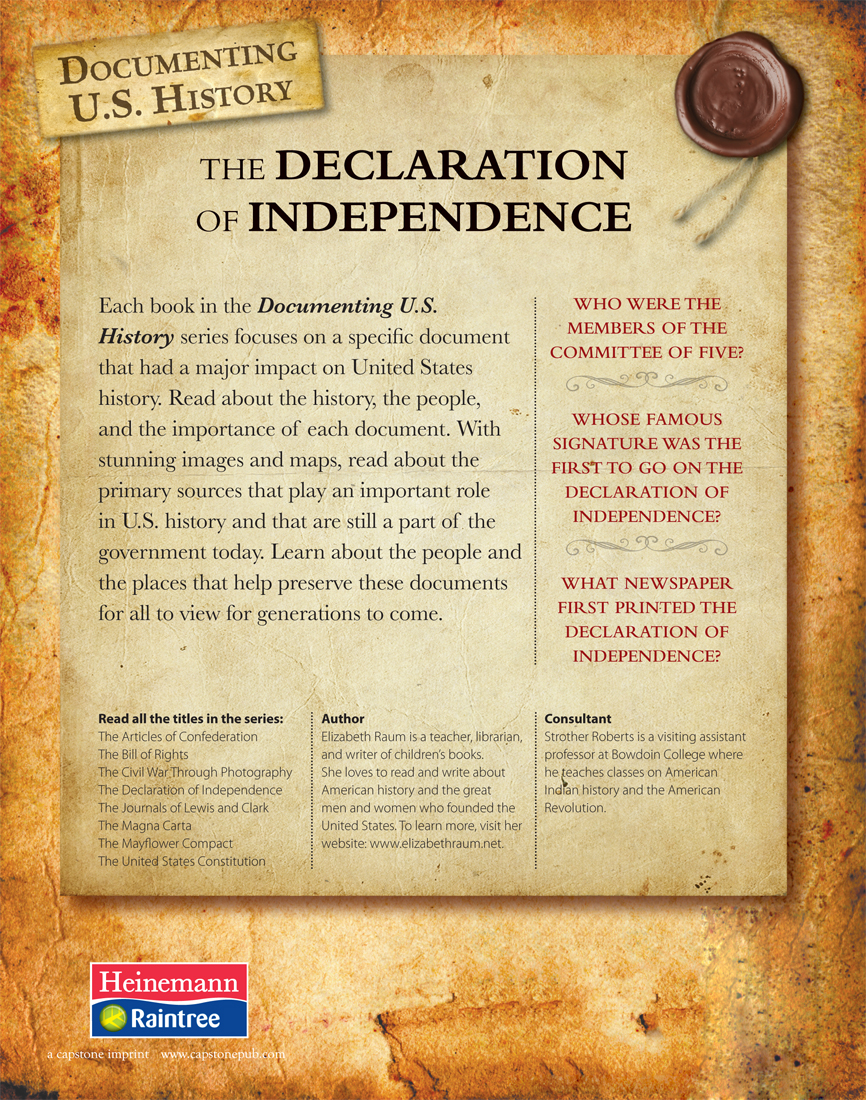
1607
The colony of Virginia is founded.
1732
The colony of Georgia is founded.
17541763
The French and Indian War is fought.
1765
The Stamp Act is passed.
1767
The Townshend Acts are passed.
1773
Colonists carry out the Boston Tea Party.
1774
The Intolerable Acts are passed.
September 5, 1774
The rst Continental Congress meets.
April 19, 1775
The rst shots of the Revolutionary War are red at Lexington, Massachusetts.
May 10, 1775
The Second Continental Congress meets.
June 7, 1775
Richard Lee proposes independence from Great Britain.
June 11, 1776
Delegates appoint the Committee of Five.
June 1128, 1776
Thomas Jefferson creates a draft of the Declaration of Independence.
June 28, 1776
The Committee of Five sends Jeffersons draft of the Declaration ofIndependence to Congress.
July 2, 1776
Congress votes for independence.
July 4, 1776
Congress adopts the Declaration of Independence.
July 45, 1776
Dunlap prints copies of the Declaration.
July 5, 1776
Copies of the Declaration of Independence are sent out.
July 6, 1776
The Pennsylvania Evening Post is the rst newspaper to print the Declaration.
July 8, 1776
The rst public readings of the Declaration are held.
July 9, 1776
George Washington reads the Declaration of Independence to his troops.
July 19, 1776
The Declaration of Independence is engrossed.
August 2, 1776
The delegates sign the Declaration of Independence.
December 1776
Washington leads his troops to Trenton, New Jersey.
1777
The Declaration of Independence is printed with signatures.
July 4, 1777
Philadelphia organizes the rst-ever Fourth of July celebration.
1781
Massachusetts declares July 4 an ofcial state holiday.
October 1781
British General Cornwallis surrenders at Yorkstown, Virginia.
September 3, 1783
The Treaty of Paris ends the Revolutionary War.
1787
The Constitution is written.
1870
Congress declares July 4 a national holiday.
Collard, Sneed B. Thomas Jefferson: Let Freedom Ring . New York: Marshall Cavendish,2009.
Fritz, Jean. Will You Sign Here, John Hancock? New York: Pufn Books, 2009.
Gaines, Ann. John Adams: Our Second President . Mankato, Minn.: Childs World, 2009.
Micklos, John. From Thirteen Colonies to One Nation . Berkeley Heights, N.J.: Enslow,2008.
www.archives.gov
National Archives
Visit the website of the National Archives to learn about the Founding Fathers of the United States, plan a visit to see the Declaration of Independence, and sign the Declaration yourself!
http://classroom.monticello.org/kids/home/
Monticello Classroom
Learn more about Thomas Jefferson and the Declaration of Independence at this website.
http://www.loc.gov/rr/program/bib/ourdocs/DeclarInd.html
The Library of Congress: Primary Documents
Take a close look at important primary source documents at this Library of Congress website.
Throughout history, people have created records of special events. Ofcial documentssuch as birth certicates record an important event in the life of a particular person.Other ofcial documents, such as the Declaration of Independence, record importantevents in the history of a nation. These documents are called primary sources .
When historians study the past, they prefer to use primary sources. Primary sourcesprovide a rsthand account of what happened. They include ofcial documents, letters,diaries, speeches, photographs, drawings, and artifacts . Artifacts are items suchas furniture, clothing, and buildings.

This copy of the Declaration of Independence suffered wear and tear in the yearssince it was rst printed.

Artifacts, such as this 1779 musket, provide information about the weapons that theAmerican colonists used as they fought for independence.
Newspaper articles, pamphlets , and posters are also primary sources. So are diariesand letters. Unlike ofcial documents, these primary sources may disappear over time.Luckily, some are treasured and protected. They may end up in museums and libraries,where historians can read them to get a glimpse into life in other times and places.
Artifacts such as guns, ships, furniture, and clothing also provide an accurate pictureof the past. For example, when historians study a musket or cannonball, they gaina better understanding of how wars were fought. Understanding the small details helpsthem form a clearer picture of what happened.
Many original documents require special protection. They are kept in museums or inspecial library collections called archives . The original copy of the Declarationof Independence is stored at the National Archives in Washington, D.C. A speciallydesigned case protects it from theft or damage (see pages 4043).
However, there are many copies of the Declaration of Independence. If the words inthe copy are exactly like the original, then the copy is also considered a primarysource. That is true for all ofcial documents.
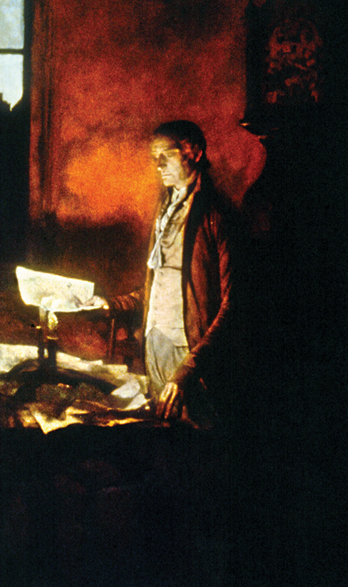
In 1898 Howard Pyle painted this picture of Thomas Jefferson writing the Declarationof Independence. He was not present when Jefferson wrote the Declaration in 1776.Pyle had not even been born yet. So he did research, using primary sources, to ndout what Jefferson looked like, what kind of desk he used, and so on. This painting,which gives an accurate picture of a historical event, is considered a secondarysource.
Historians use primary sources when they do research. Primary sources present a pictureof what it was like in the past. However, when historians write a new book or articlebased on those primary sources, they are creating secondary sources . Encyclopediaarticles and textbooks are secondary sources. So is this book.
Secondary sources provide important information about particular people, places,and events. Some primary sources, such as diaries, letters, and historic newspapers,are not always easy to nd or to use. It may take years of study for a historianto collect detailed information about the past. Historians write new books and articlesusing the information found in primary sources.
The Declaration of Independence is one of the three most important documents in U.S.history. The Declaration of Independence, the Constitution , and the Bill of Rights are called the Charters of Freedom. These documents reect the changes that occurredwhen the American colonies declared independence from Great Britain in the late 1700s.
Font size:
Interval:
Bookmark:
Similar books «The Declaration of Independence»
Look at similar books to The Declaration of Independence. We have selected literature similar in name and meaning in the hope of providing readers with more options to find new, interesting, not yet read works.
Discussion, reviews of the book The Declaration of Independence and just readers' own opinions. Leave your comments, write what you think about the work, its meaning or the main characters. Specify what exactly you liked and what you didn't like, and why you think so.

